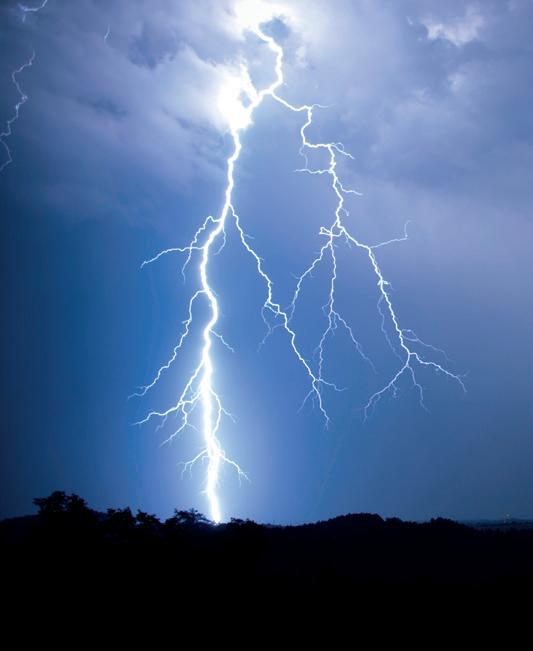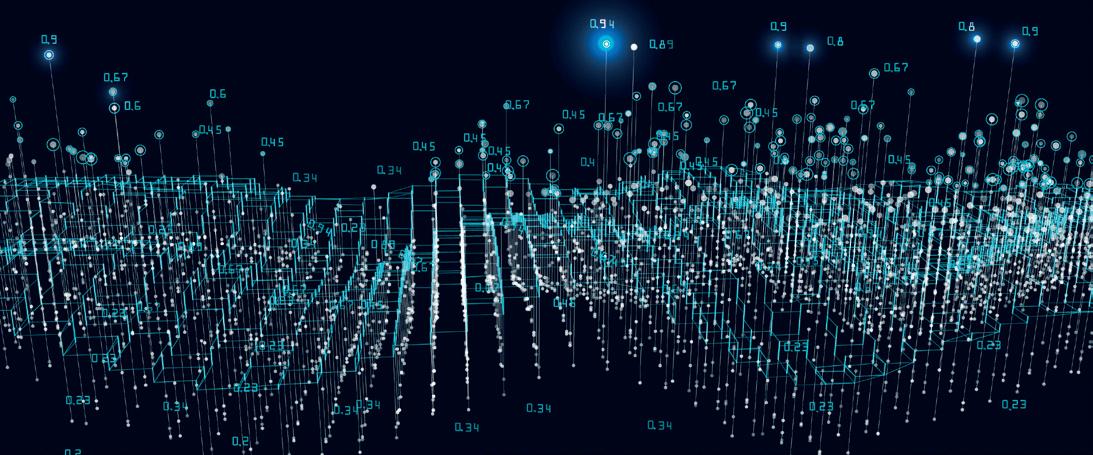
14 minute read
2.2 Types of Scenarios
Scenario design and development processes can be commonly distinguished and classified, based on the development process, their purpose, or certain characteristics.7 In practice, these typologies are rarely binary or independent, and instead can be imagined as a multi-dimensional matrix with unique outcomes. This section proposes a series of distinctions which are commonly used to define scenarios. We encourage practitioners to consider them as they construct scenarios in the context of their scenario aims, within the process of ‘Framing the Scenario(s)’ (Step 3 in the Scenario Development Framework). These typologies are illustrated in Figure 2, and discussed in detail within this section.
What is the scenario for?
How can the scenario benefit stakeholders?
On what timescale does the risk materialise?
Which is the more important scenario outcome?
Who owns and contributes to the scenario process?
Understanding Tail Risks Understanding Emerging Risks Strategic Planning
To identify and understand extreme, low probability risks To imagine and comprehend new or evolving risks
To define a resilient strategy for the future that alleviates risks
Accumulation Management
To explore possible extreme or maximal correlated losses to insurance portfolios
Aid Communication Demonstrate Due Diligence Identify Bias Sensitivity Analysis Addressing Uncertainty
To contextualise complex risks and promote stakeholder understanding To assess risk exposures and understand their financial implications
To explore partialities that stakeholders may hold towards certain decisions To investigate the power and variance of controlling variables on a risk To expand understanding of the range of plausible outcomes
Trend Risk Scenario Shock Risk Scenario
Slow-onset, trend phenomena that emerge gradually over time
Sudden-onset, shock events that occur quickly or unexpectedly
Exploratory - To ask ‘what if?’
To stimulate imaginative thinking about the future and widen understanding of available options Normative - To ask ‘what for?’
To better understand the path to desirable futures and evaluate the impact of decisions
Participatory - Bottom-up, co-production of knowledge
To incorporate stakeholder culture, knowledge, and experience in the process and end product Expert-Driven - Top-down, analytical
To deliver rigorous scientific descriptions of plausible futures to decision makers
Is the scenario required to define the likelihood of an outcome?
Probabilistic
To estimate the likelihood of occurrence based on the variance of quantified causal parameters
Deterministic
To speculatively explore phenomena that involve a high degree of uncertainty
Figure 2: Framing a scenario – scenario typologies and applications
Trend Risk Versus Shock Risk Scenarios
Scenarios can be developed to consider either suddenonset, shock events that emerge quickly or unexpectedly, or slow-onset, trend phenomena that emerge gradually over time. The type of risk dictates how the scenario is developed and how it may be used.
Trend risks require users to consider temporality and identify both short-term signals and long-term impacts. The latter are likely to be less noticeable than shortterm events and are difficult to align with organisational decision making, which tends to focus on much shorter future outlooks; as a result, it can be more difficult to incentivise mitigation measures for long-term threats. If effective action is taken, there is the benefit of having enough time to determine the best method to mitigate or alleviate the risk. Trend risks are typically not insurable yet are a topic of increasing interest within the insurance sector, for example, as seen in the corporate uptake of an Environmental, Social, and Governance (ESG) agenda, and in response to growing awareness of the increasingly pronounced impacts of climate change. Insurers are increasingly needing to make decisions on how to address trend risks, whether it be through an adaptive process to keep losses within an insurable window, or the discontinuation of certain insurance policies. To best support these decisions, trend risk scenarios remain an important component of scenario analysis, regardless of whether the risk is currently insured.
In contrast to trend risks, shock risks are sudden events which may not have been anticipated and trigger impacts that materialise rapidly. The focus of these scenarios is
The Origin of Trend Scenarios
Trend risk scenarios have historically been used within operational or strategic planning and have roots in policy and operational settings. The Cold War futurist, Herman Kahn, and others at RAND Corporation, are regarded as among the founders of the construction and use of scenarios in the 1950s and 1960s, primarily in the security arena (e.g., how a country would function after a nuclear conflict), and encouraged the philosophy of how to ‘think the unthinkable’.8 He described a scenario as:
“a set of hypothetical events set in the future constructed to clarify a possible chain of causal events as well as their decision points”.9 precedent for the future of scenario planning.10 In the 1970s, this methodology was adapted by Pierre Wack’s newly formed Planning Scenario team at the Royal Dutch Shell Group for use in a corporate setting, primarily to anticipate developments in the volatile oil and gas markets. ‘Shell’ scenarios were notable for their trend risk analysis and strategic planning purposes, and followed seven broad steps11: 1 Decide drivers for change/assumptions 2 Bring drivers together into a viable framework 3 Produce seven to nine initial mini scenarios 4 Narrow down two to three scenarios 5 Draft the scenarios 6 Identify the issues arising
Other notable research was being undertaken at the time by the Stanford Research Institute, who offered long-range planning facilities to support their military and business consulting. They were among the first to formalise and utilise scenario planning techniques for decision making by businesses and governments.
Kahn’s scenario methodology used mathematical models and forecasting techniques and set a The value of Shell’s futuristic approach was first realised in the 1973 Arab–Israeli (Yom Kippur) War, when the first oil embargo caught most companies by surprise. Shell had considered and strategized for the implications of an oil price shock, and thus overcame the worst shocks, and emerged from the crisis as the sector leader.
Image 1: Herman Kahn of RAND Corporation (National Archives, 1963)
to identify events which might “shock” the system and have a valuable role in tactical planning. The impact of such scenarios is likely to be acute, rather than accruing slowly as in the case of trend risks, and they are more commonly hedged by conventional insurance products. The impacts associated with a shock event will demand an immediate response from the insurance community. The focus of this report is on shock risk scenarios, which have a wider variety of typologies and methodologies specific to the insurance industry. The dialogue within the report is written from a stress test perspective yet is often applicable in trend risk discourses.
Although stress test scenarios in the form of shocks have been used by the insurance industry for decades, their use via modelled catastrophe theory was precipitated in the insurance industry following Hurricane Andrew in 1992. At the time, Hurricane Andrew was the most expensive insured event recorded, and triggered over $16 billion in losses.12 The financial impacts caused eleven insurers to go out of business in the state of Florida and caused heavy strain on the global insurance community.13 In the following years, the insurance focused credit agency, A.M. Best, required American insurers to report their modelled losses. Lloyd’s of London similarly introduced their realistic disaster scenarios (RDS) in 1995 (see Section 5 for an example RDS, Business Blackout, used as a model case study for scenario development). The intention of these scenarios was to provide a communal exercise for insurance organisations to stress their portfolios and identify any potential weaknesses which do not meet regulatory thresholds. The application of stress tests quickly evolved beyond regulatory purposes and has become a valuable tool in risk exploration and response planning.
Exploratory Versus Normative
An important distinction concerns the purpose of scenario development. Scenarios range on a continuum between exploratory, with the purpose of educating and expanding awareness of plausible futures, to normative, with a primary aim to facilitate decision making. Often, the goal is to concurrently balance exploratory and decision-based functions. Exploratory efforts ask, ‘what if?’, as a helpful way to create a ‘future memory’.14 This approach explores a wide and contrasting range of potentially plausible futures as a function of diverging assumptions (in other words questioning ‘what would happen if this happens?’), with the aim of widening the scope of options considered by users and stimulating imagination and creative thinking about the future. The focus here is on learning about the process under analysis, raising awareness, developing a descriptive assessment of plausible futures, and taking a specified issue or environment as the subject of analysis.15 Exploratory scenarios often apply a forecasting approach, defining scenarios on the basis of a set of imposed rules defined from the base year onwards.16

In contrast, normative scenarios primarily ask, ‘what for?’. To utilise such a scenario for decision making, a more narrowly defined set of criteria and objectives must be explicitly defined.17 A normative approach typically uses scenarios that are formulated in technical, quantitative terms (and thus have less emphasis on narrative) so that the paths to desirable, or undesirable, futures can be analysed. The intention is to evaluate the impact of a set of variants concerning specific interventions (behaviours and decisions) relative to a baseline, based on some form of valuation.18 Such efforts tend to focus on delivering a product, in the form of a specific alternative to address a problem, or an advising tool for evaluating alternatives.19 A normative approach can be more easily combined with a backcasting approach (as opposed to forecasting), defining scenario pathways only after first describing the end-points and reasons back from these end-points, and exploring shortterm decisions to make these changes happen.20
Participatory Versus Expert-Driven
Another divergence in scenario design concerns who ‘owns’ the process, with a key distinction made between top-down, expert-driven (or ‘analytical’) approaches and bottom-up, participatory approaches. Both have advantages and disadvantages, and each may serve different purposes, although they are not necessarily discrete, with effective scenarios often including elements of both. We emphasise the importance of participation in the scenario process, since this dimension is often undervalued or excluded in insurance applications of scenarios.
Expert-driven approaches have the objective of providing rigorous descriptions of plausible futures, including details that are well supported by available science.21 Such approaches are oriented towards decision makers, and as a result tend to neglect other stakeholders. They are analytical in approach and allow for exploration of large-scale phenomena, for example global climate change, which may pose logistical difficulties to participatory approaches.
In a participatory approach, scenario developers work together with stakeholders, namely the people potentially affected by scenario outcomes, rather than delivering scenarios as a top-down means of education. Participation targets and integrates stakeholder needs and values, and while scientific and technical knowledge remains important, such approaches makes use of cultural perspectives, knowledge, and experience beyond the involved experts to dissect complex issues. No group knows everything, and each will learn from others through the scenarios, providing everyone is represented in the discussion. Effective communication of scenario information is much easier than accurate communication of technical information (such as probabilistic risk). Such diverse engagement is effective in developing community understanding and investment in decision making, builds trust, and encourages broader acceptance of the ultimate scenario outcomes.22 Participatory approaches enable scenario developers to understand, examine, and discuss the links between phenomena at different scales – for example how global or sub-national trends relate to the vulnerability in specific regions or municipalities.23
Scientific and technological developments have driven an increasing role of technology and expertise in scenario approaches but demands for improved participation and accountability; and criticism of technical expertise, have also grown. Within the insurance industry scenarios are generally expert-driven, although there has been a recent effort to better involve stakeholders. Examples include community partnerships and local risk planning initiatives, or the rise of social impact bonds.24 Further distinctions can be made, aligning with exploratory or normative, and participatory or expertdriven approaches, as follows:
Intuitive versus formal processes
Process design refers to how scenarios are developed, or their methodological aspects, ranging from intuitive to formal approaches. Intuitive processes focus on qualitative knowledge and are participatory, incorporating many perspectives from a wide range of backgrounds and knowledge bases.25 In contrast, formal processes regard scenario development as an analytical and systematic exercise, and so depend on quantitative inputs to build conceptual or computational models. They are exclusive in the way they only incorporate views from specific stakeholders or areas of expertise.26
Process versus product orientation
The scenario development process can be at least as important for the user as the product, for example if a scenario is intended to support a specific decision. A process-oriented scenario includes the user in development, so that they may learn from the experience and feedback to enhance scenario efficacy. However, in many contexts, scenarios are instead communicated in a linear process, with an end product deliverable such as a report and or a quantification of loss. In this case the product is typically more important than the process, with the potential advantage of reaching a target audience beyond those participating in the process. If this is the case, quality, transparency, and legitimacy need to be emphasised in order to ensure scenarios are relevant to the user community and can be readily used for planning and decision making.27
Qualitative versus quantitative
The distinction between qualitative and quantitative information is clear in scenario development, but the contrasting methods may be, and perhaps should be, combined. Qualitative information, specifically narratives, provide logic to scenario assumptions and help to define plausible future developments in situations where formal modelling is not possible. They provide an effective way to derive information at different scales or for different topics (for example regional scenarios nested within global narratives). Quantification, via modelling, adds scientific rigour to scenarios, expanding on numerical estimates of futures developments (often based on simulation tools) where relevant and reliable information is available. Quantitative outputs can strengthen communication through clear definitions and rules.28
Deterministic Versus Probabilistic
Scenarios are also characterised as either deterministic or probabilistic. A deterministic scenario is created by selecting a specific set of parameters and conditions, while a probabilistic scenario considers a multiplicity of outcomes, each with its own probability of occurrence, depending on the probability distribution of the input parameters and conditions.29 A deterministic scenario treats the probability of occurrence as finite, whereas probabilistic modelling is intended to address the uncertainty with a ‘complete’ probability distribution of synthesised events.
Deterministic scenarios are recognisable by their focus on the causal chain of circumstances that will give rise to unusual or extreme outcomes. They are an effective means of exploring phenomena speculatively or hypothetically when they are not very well understood or there is a high degree of uncertainty. They can also be very valuable for exploring emerging risks, specifically where market or policy responses are uncertain.
In comparison, production of a probabilistic scenario is possible when the underlying process is well understood, and the causal parameters can be characterised with estimates of their occurrence rates and distribution. Each step in the causal chain has a defined distribution of outcome likelihoods, and the model stochastically samples from this distribution in many simulations. The probability of an outcome and its uncertainty structure is very sensitive to the assumptions made for the input parameters.30 By incorporating random variations into the model, stochastic outcomes show a range of scenario outcomes, and the likelihood of these permutations. Techniques for probabilistic modelling are well understood and documented, and are used in analysis, such as natural catastrophe modelling, where the subject phenomena have been comprehensively studied and for which it is possible to estimate the uncertainty distributions of the underlying variables.
There is overlap in deterministic and probabilistic scenarios. For example, probabilistic modelling can be used to generate a deterministic scenario, typically such as the worst, best, or most likely case events. Caution should be taken when comparing the two types, as probabilistic scenarios still contain deterministic attributes. Specifically, probabilistic scenarios require all potential outcomes to be defined, yet in practice the universe is not a closed system. There are outcomes of future probabilistic scenarios which cannot be recognised at present; thus, it is not possible to achieve a perfect probability estimation. Both deterministic and probabilistic scenarios are used by the insurance community.
Probability theory is critical in the industry, where the likelihood of future events is required to develop a policy or price a premium. This is true even where significant uncertainty exists, and it is in this case where deterministic scenarios can be particularly important to address uncertainty, providing reference points on a journey towards probability. It is also important to note that probabilistic scenarios are only useful when understood, and where decision makers are not familiar with the theory, it may be unhelpful or even misleading. For example, return periods, or recurrence intervals, are standard calculations for describing the magnitude of potential events – such as a 1-in-100-year flood – but are prone to misconceptions and misuses that are well acknowledged but still widespread.31 In cases where communicating scenarios to non-experts is required, it may be that probability should not be depended on, and a deterministic approach could have greater value.










